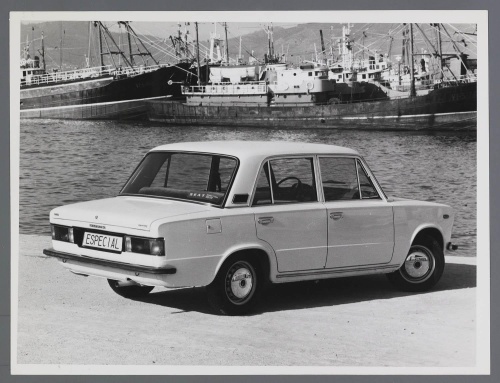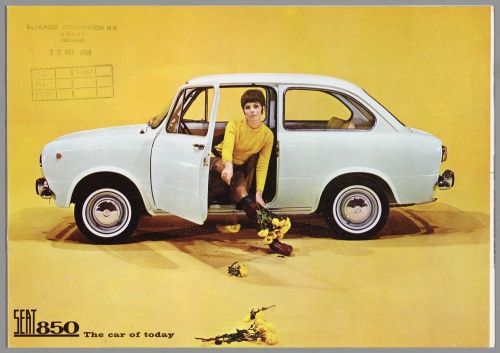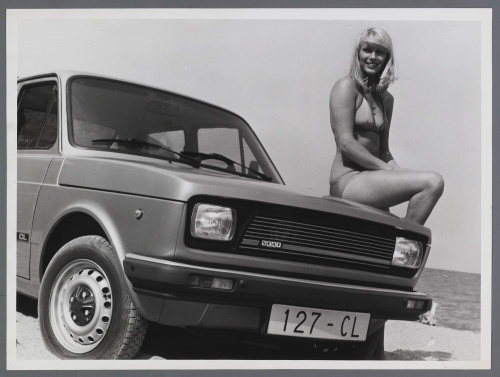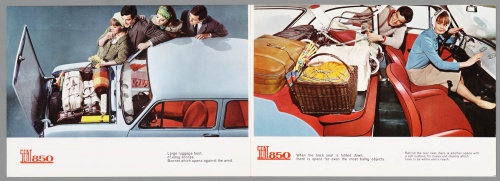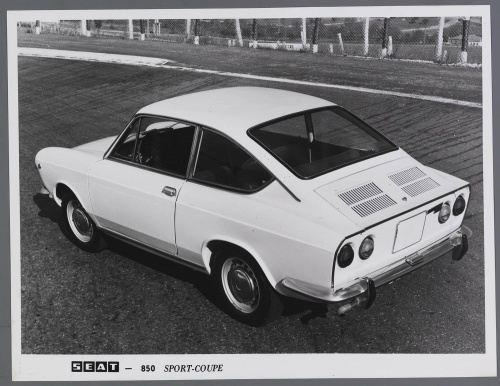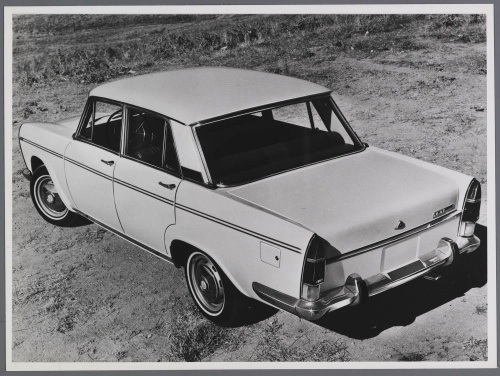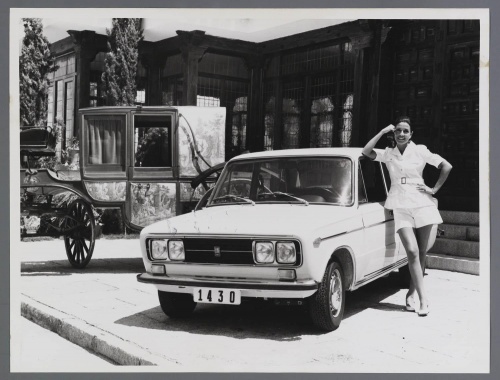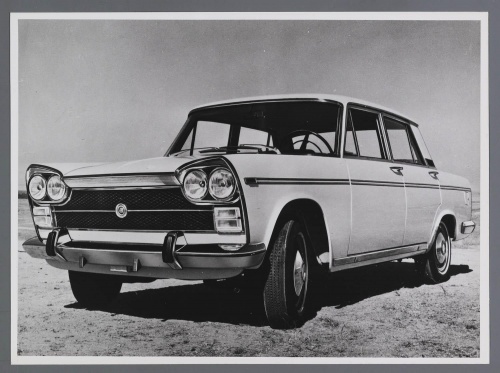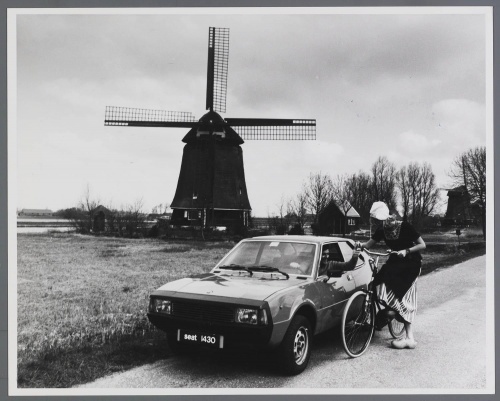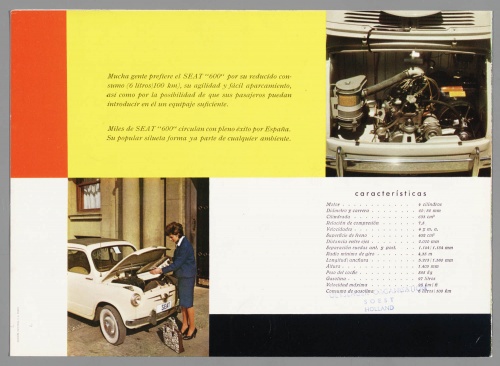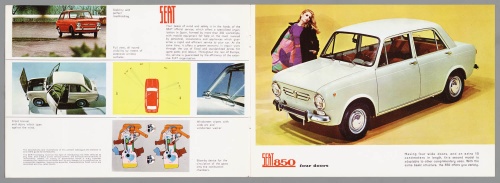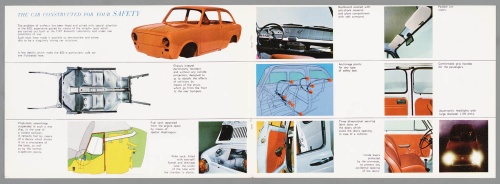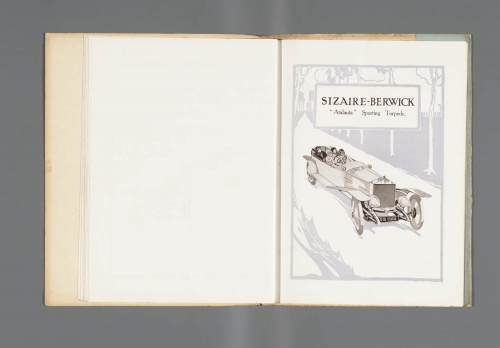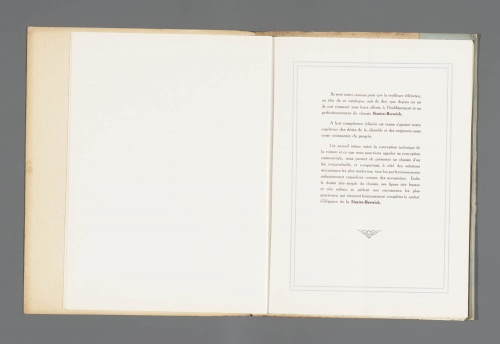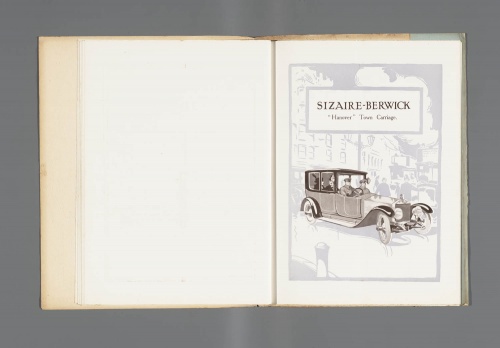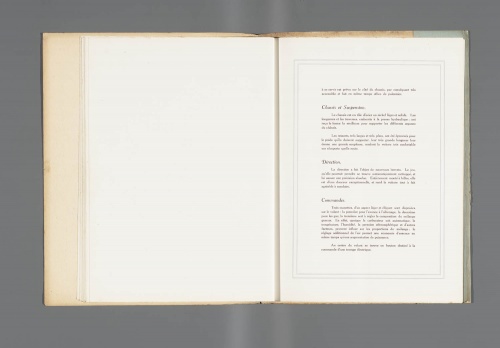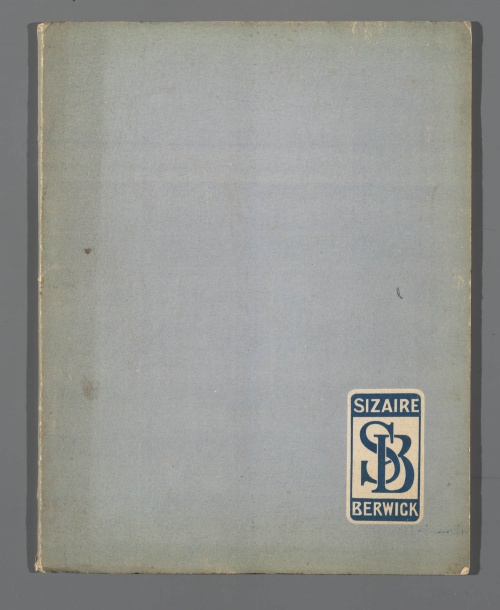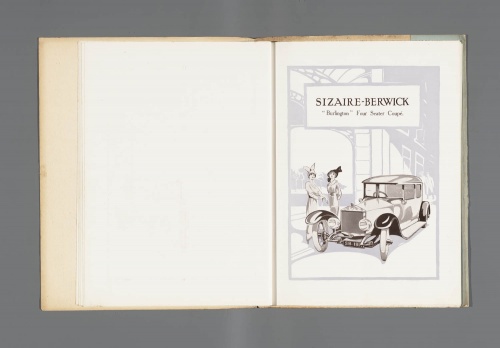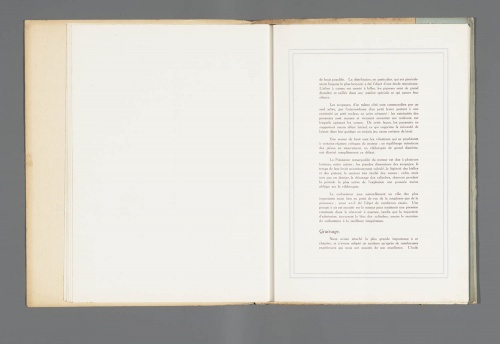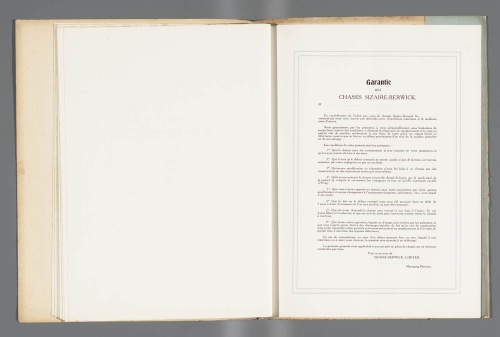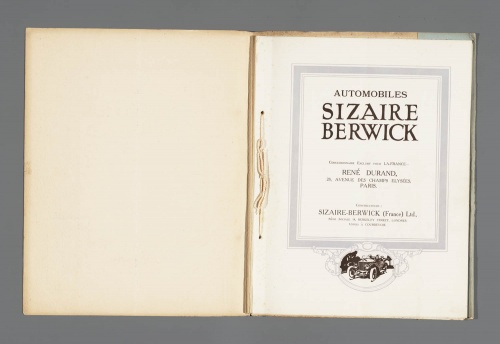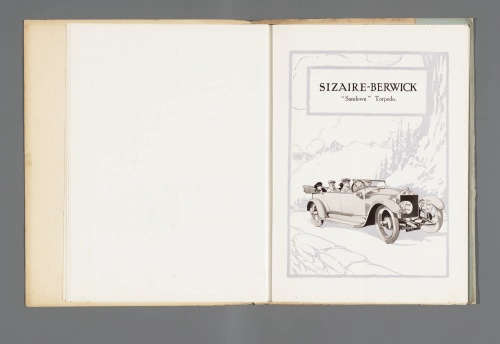Dutch Automotive History (part 56) Seat, SIMCA, Sizaire-Berwick (125 photos)
SEAT (Barcelona, Spain, 1949-)
The history of the "Spanish Society of Automobiles for Tourism" (Sociedad Espanola de Automoviles de Turismo), abbreviated as SEAT, begins in 1919. Then the Italian concern FIAT founded its branch in Spain. In 1931, the cars assembled there received the name "FIAT-Hispanias". In 1949, the Spanish state financial group INI took control of the company, which became known as CEAT. The change of owner had mainly political significance and did not affect production in any way: cars developed by FIAT continued to roll off the assembly line. At the top of the model pyramid was the middle-class sedan SEAT-1400, an analogue of the FIAT-1400, produced until 1956. In 1957, they introduced the lightweight rear-engine SEAT-600, similar to the FIAT-600. Two years later, SEAT launched its “own” car model “1800” with a power unit from the SEAT-1400. In the 60-70s, SEAT manufactured many models of the Italian concern ("124", "128", "131" and "132"). Only the significantly redesigned FIAT-850 was offered as the SEAT-133.
In 1979, FIAT acquired a controlling stake in SEAT and again became its full owner. This made it possible to launch mass production of new Italian cars in Barcelona. Less than a year and a half later, FIAT, having found itself in a difficult financial situation, abandoned its Spanish branch. In an effort to prevent the dismissal of 32 thousand workers, the Spanish government, through the INI group, acquired 90% of the company's shares. In 1982, CEAT entered into a cooperation agreement with Volkswagen and began assembling cars of the Polo, Passat and Santana series. In the same year, a simple and cheap small-sized car, the Marbella, identical to the FIAT Panda, went into mass production. In the program, in parallel with the German ones, the Fura (Riga) and Ronda models were produced - copies of the FIAT-127 and FIAT Ritmo. In 1985, based on the Ronda hatchback, the Malaga sedan was introduced. In June 1986, the VAG concern (Volkswagen-Audi), having bought 53% of SEAT shares, became its new owner.
Not long before, in 1984, SEAT's first in-house development entered the market - the compact 3-door front-wheel drive Ibiza. Its design was carried out by Ital Design, the first bodies were manufactured by the German company Karmann, and the mechanical part was created by Porsche. In 1993, the second generation of Ibiza appeared. Cars are offered with 3- and 5-door bodies, gasoline and diesel engines with displacement from 999 to 1984 cm3. In 1993, based on the Ivica, the Cordoba sedan appeared, which was joined by a coupe in 1996. In 1991, the Toledo 5-door hatchback was released, similar in design to the second generation Volkswagen Golf. Power units with engines with a displacement of 1595-1984 cm3 and a power of up to 150 hp are used. Since 1996, the SEAT Alhambra high-capacity station wagon has been offered, unified with the Volkswagen Sharan. Since May 1997, the compact SEAT Arosa has been produced on the Polo base in Germany.
SIZAIRE-BERWICK (Courbevoie, France/Park Royal, UK, 1913-1930)
The Sizer-Berwick company (pronounced Sizer-Berwick in England) was founded in 1913 by the Sizer brothers from France and the Englishman F. W. Berwick. Berwick was the representative in London of the French company Sizaire-Naudin, founded by the brothers several years earlier. The first Sizer-Berwick-20CV vehicles were built in France. They were equipped with 4-cylinder engines with a displacement of 4072 cm3, which were distinguished by silent operation. The shape of the radiators was copied from the Rolls-Royce, as a result of which the British company filed a lawsuit against Seather-Berwick, although it was not successful. Seather-Berwick cars were often called "poor man's Rolls-Royces", as their cost was much lower than high-end cars, and their build quality was high.
During the First World War, Sizer-Berwick temporarily ceased operations. The Sizer brothers were called up for military service, and Berwick opened an aircraft workshop in Great Britain. At the end of the war, Maurice Sizaire moved to London, where he developed the 20/25HP model, which became famous thanks to the same Rolls-Royce-style radiator lining, high quality and powerful engine with a displacement of 4534 cm3. In 1920, automobile production began in the former Berwick workshop in Park Royal. The serial versions turned out to be noticeably heavier, and the demand for them turned out to be low. In 1923, Austin acquired a controlling interest in Seather-Berwick, after which until 1927 the company assembled simpler and cheaper models 12HP and 15HP with Austin engines, which did not differ in any way. interesting features. The French branch of Cizer-Berwick existed until 1930 and in the last years of production
There were respectable cars "18CV" and "28CV" with American inline 8-cylinder Lycoming engines.
It should be added that in 1921 the Sizaire brothers founded the Sizaire Freres company in France, where until 1932 they produced original cars with completely independent suspension on all wheels and valveless engines.
SIMCA (Nanterre/Poissy, France, 1934-1978)
In 1934, the Italian Henry-Theodore Pigozzi founded the Societe Industrielle de Mechanique et Carrosserie Automobile, abbreviated SIMCA, in France. He intended to produce FIAT cars under license. The first 6CV model, which came out of the Nanterre plant in November 1934, turned out to be a modification of the FIAT 508 Balilla. Then the SIMCA-FIAT 11CV car appeared, an analogue of the FIAT-518 Ardita. In 1936, production of the SIMKA-5 (FIAT-500 Topolino) and SIMKA-8 (FIAT-1100) models began. Based on these cars, Amedee Gordini produced racing and sports cars. In 1939, SIMCA-Gordini 8 won Le Mans in its class.
SIMKA's first in-house development was the Aronde subcompact car with a monocoque body, introduced in 1951. The model was a great success on the market - already in the first year of production more than 20 thousand copies were sold, and in 1959 the sales volume exceeded 100 thousand units. The Arond model was produced in numerous versions until 1964.
In 1954, SIMCA, taking advantage of the opportunity, acquired the plant of the French branch of the American concern Ford in Poissy, receiving in addition the rights to produce the Vedette model. This is a mid-class car with a V8 engine with a displacement of 2350 cm3 and a power of 84 hp. It was produced in France until 1961, then its production continued in Brazil (until 1967). The plant in Poissy became the main production center of SIMCA, and the plant in Nanterre was sold to Citroen in 1961.
In 1957, SIMCA introduced the Ariane car, which had a body and chassis from Vedette and a 4-cylinder engine from Arond. Two years later, SIMCA acquired the Talbot company.
Some time later, the decline of the SIMKA company itself began. In order to survive, it was decided to sell 15% of the shares to the American concern Chrysler.
In 1962, SIMKA-1000 appeared on the market with a rear-mounted engine and a distinctly angular body shape. A year later, Chrysler increased its share in SIMCA capital to 63%, becoming its de facto owner. The company's production program was replenished with three new models: "900", "1300" and "1500". In 1964, Pigozzi died; three years later, Chrysler already owned 77% of the shares of the French company.
In 1968, the front-wheel drive SIMKA 1100 was born with a transversely mounted power unit and an engine of 1118 cm3. In 1970, SIMCA acquired the automobile department of the military-industrial group Matra, in cooperation with which the Bagheera sports car and the Rancho utility vehicle were produced. In July 1970, Chrysler bought 99% of SIMCA's share capital. This led to the renaming of SIMCA to Chrysler-France, although the old models at first bore the designation SIMCA, then SIMCA-Chrysler and Chrysler-SIMCA. In the same 1970, the Chrysler 160 and 180 models appeared. In 1975, a new SIMCA-Chrysler range was released, consisting of front-wheel drive models of the 1307 and 1308 series with a 5-door hatchback body. They were equipped with transversely mounted engines with a displacement of 1294; 1442 cm3 with a power of 68-85 hp. The classic layout models “1609” and “1610” that followed these successful cars in 1977 were not successful. In September 1978, Chrysler, solving difficult financial problems, ceded all its European enterprises to the Peugeot-Citroen group (PSA). After some time, SIMCA-Chrysler cars received a new brand, Talbot.
